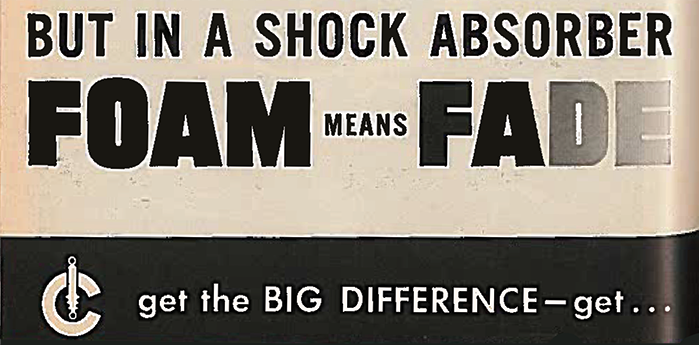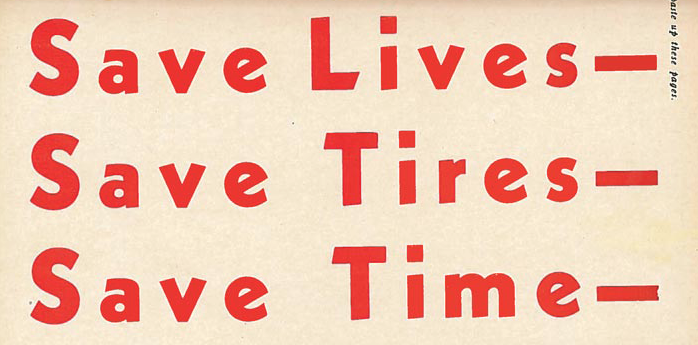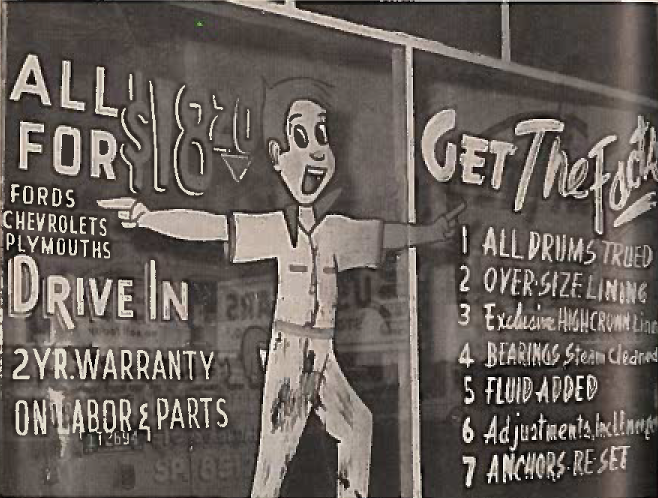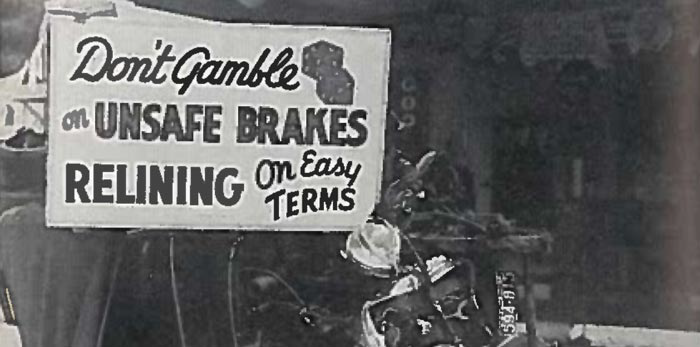Brakelights: Foam Means Fade (June 1961)
Shocks fading on vehicles was a big safety concern before gas charged shocks in the 1970s. On bumpy roads, old shocks would heat up the fluid, causing bubbles to form in the fluid. This would cause the piston to cavitate and the shock to fade. Often, the car would lose control. Sometimes, if the fade was bad enough, the shock would puke fluid out of the top seal. Gas charging of shocks changed this because the fluid was now under pressure, much like an unopened beer can.

BRAKELIGHT: World War II (April 1944)
At the start of World War II, Japan occupied the rubber plantations in the Dutch East Indies. This cut U.S. manufacturers off from the largest sources of natural rubber to make tires and products for the war effort. The U.S. solved the problem using rationing, recycling and lowering the speed limit to 35 mph. Another

BRAKELIGHT: Cartoon Windows (1955)
The going rate for a complete brake job in 1955 was $18.20. Drum brakes of this vintage had limited self-adjustment and required constant attention. This shop building is still there, but it is now a Tiki Bar.

BRAKELIGHT: Reliable Brake Service, St. Louis, MO (Dec. 1965)
Reliable Brake Service in St. Louis, MO, is an institution in the Lindwood Park neighborhood. The two-foot tall letters on the front of the building have stood for more than 50 years and have outlasted two owners. In July 2015, the business was put up for sale due to the partial retirement of the current


